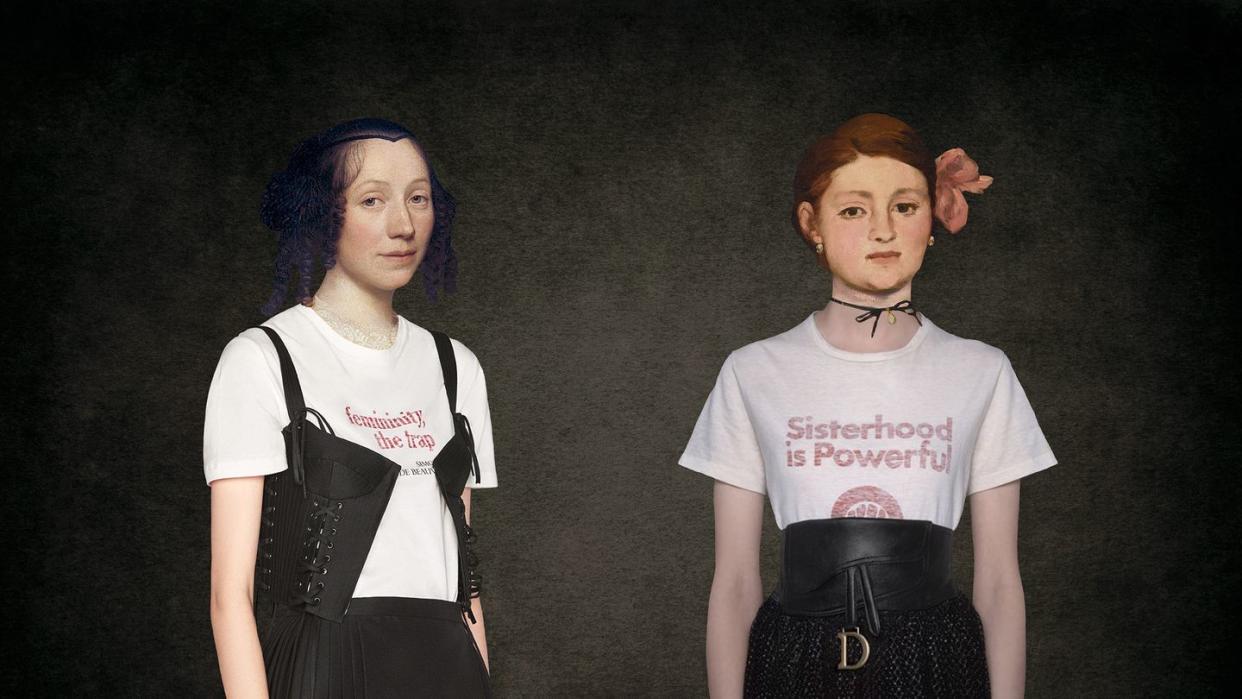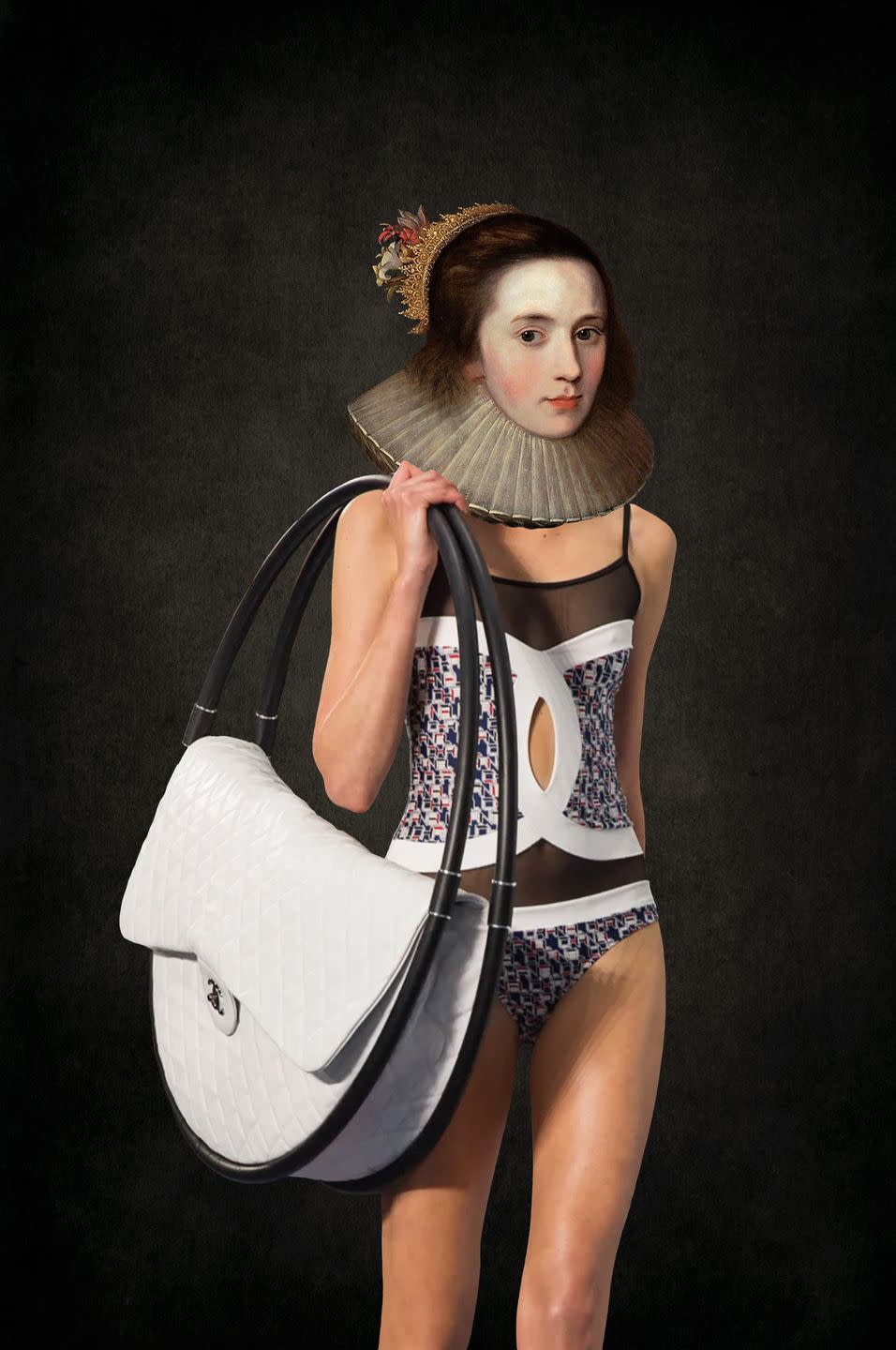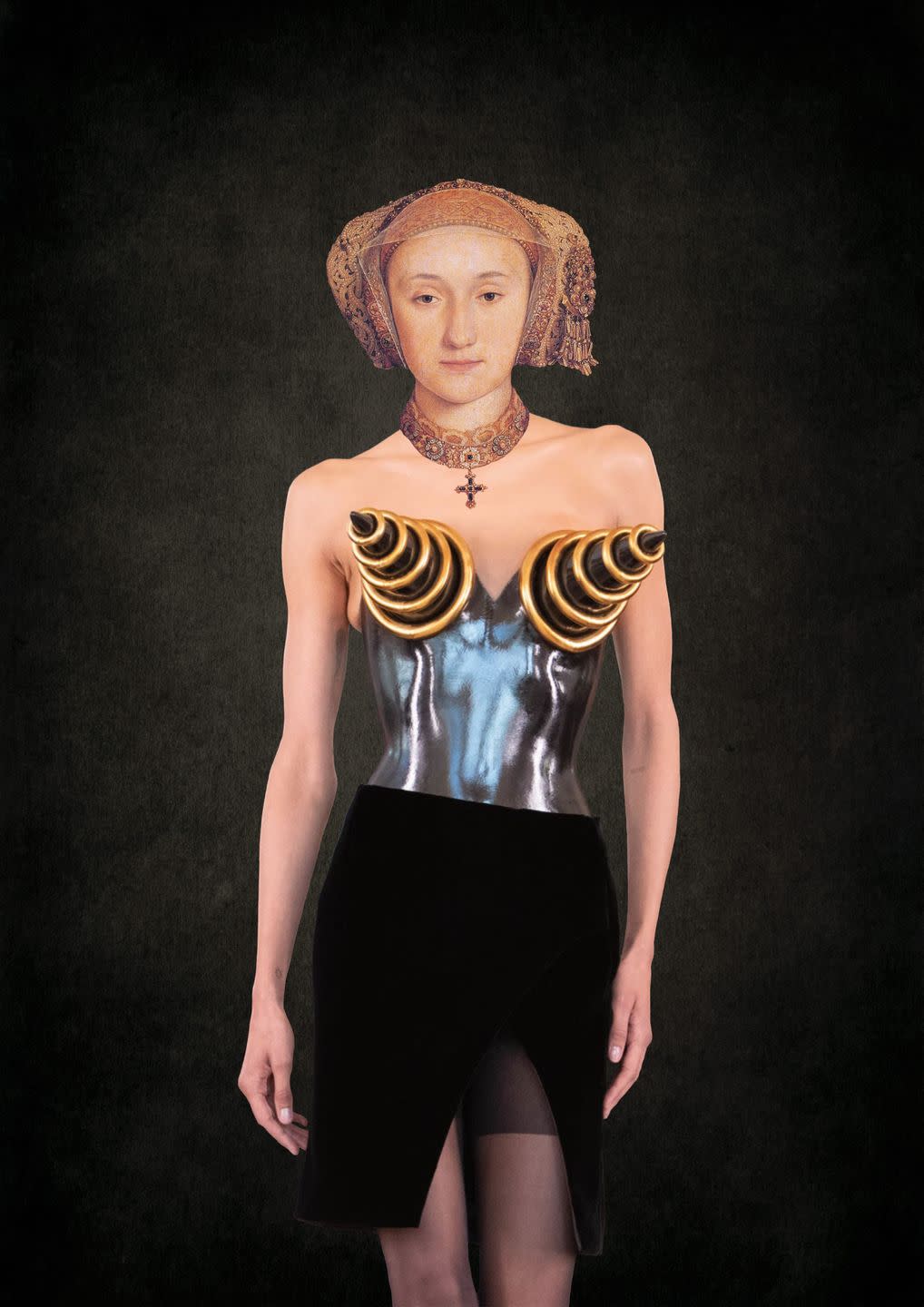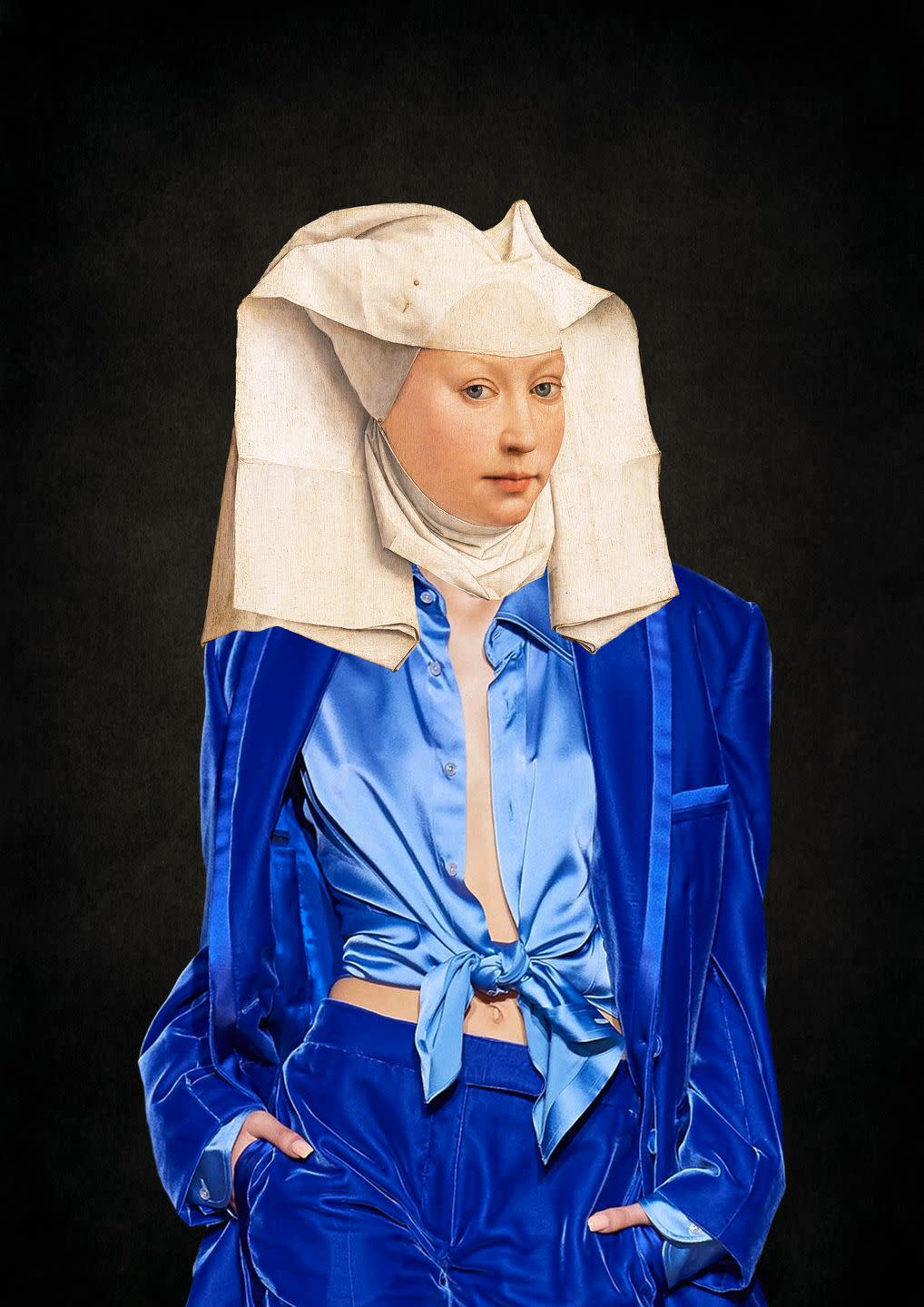What If Renaissance Women Wore Dior?

Try to picture Schiaparelli’s glorious gilded breastplate or Dior’s We Should All Be Feminists slogan T-shirt on a woman from the 15th century. Chances are you can’t, but Jessica Worrall can. The collagist layers contemporary couture atop portraits of real Renaissance women to create digital art that contradicts today’s social media-centric consumerist model. In Worrall’s world of patchwork, an Elizabethan lady hints at her aristocratic background wearing a period white ruff around her neck—and a one-piece Chanel swimsuit from the spring/summer 1994 collection.
Clothing can serve as a visual marker of affluence (Worrall’s Elizabethan lady would have scoffed at quiet luxury), and the well-off have historically utilized sartorial status-signals, from Birkin bags to Hermès scarves, to send a message. Through artistic juxtaposition, Worrall weaves threads of similarity between symbols of power and social hierarchy that have existed for centuries, albeit in different forms.
“The ruff is a quintessential example. If you wore a ruff you were obviously somebody who couldn’t do menial tasks such as cleaning, and you had people to do it for you,” she says. “The reaction of seeing someone sporting an exquisite 16th century lace ruff is similar to the modern counterpart of seeing someone strutting by in a pair of Louboutins. Both scream money and power to the wearer and the observer.”

In Worrall’s eyes, manifestations of wealth are not all that different than they were during Renaissance times, when sumptuary laws declared who could wear what. “Sumptuary laws were ostensibly brought in to enforce the social classes and hierarchical structures of society, from ensuring only royalty and nobility could wear fabrics like black velvet or gold brocade, the most expensive ones to create from dyes, to setting upper limits on how much fabric a ‘commoner’ could use to make a coat out of,” she says. “You could be fined for dressing ‘above your station,’ so there was no chance of upward mobility.”
Contemporary restraints of cost mirror a similar effect. There are more affordable options in the form of designer read-to-wear labels and services like Rent The Runway, but at times the fashion world still resembles the 15th century, in that it sets those who can afford certain badges of social standing apart from those who can’t.

Worrall credits her job as a costume designer for helping set the stage to create digital collages. Having worked in the London performing arts industry with Shakespeare’s Globe Theatre and the Lyceum Theatre, she has a knack for mixing and matching garments from different eras.
She buries herself in extensive research on costume design to craft period drama looks that are relevant for a modern audience. “My work as an artist is directly influenced by how I design costumes for theater,” she says. “With both mediums, I’m trying to provoke conversation about the history of how women dress, why they dress that way, and who is making those choices.”
Using real-life madams, duchesses, and ladies of the Renaissance as her protagonists, Worrall conducts extensive research into what sorts of lives they lived and takes cues from their expressions and body language in order to update their wardrobe. The upper echelons are stripped of billowing gowns, bodices, and demure corsets, and instead dressed in logo-emblazoned Gucci co-ords, lush blue Tom Ford velvet suits, and fur coats with statement shoulders by Yves Saint Laurent.
Where these women may have once dressed to be seen—inevitably wanting to measure up to perceptions of beauty and desirability dictated by the male gaze—Worrall gives them back agency, redirecting power through artistic rendition.

Who are these women? Worrall’s muses are not just the crème de la crème of Renaissance society who had the privilege of being painted. She also features pregnant women, mothers, and plus-size women. She tracks down rare portraits of the underrepresented and gives them 21st century makeovers in Jean Paul Gaultier conical bras or voluminous Viktor & Rolf gowns.
The work grants Worrall a playground of creative opportunities to express purpose. “Making a collage is kind of a political act, because you’re cutting something up,” she says. “It’s not necessarily a violent attack, but there’s a sense of destroying something to create something new. It’s a way of very directly being able to put images together that might not belong together, and that allows me to kick-start a discussion around the often divisive issue of a woman’s value in society and how this has been enforced throughout history by clothing choices that are often dictated by external forces.”

Her art holds up a mirror to the fashion industry, and particularly to luxury conglomerates designing for women, but led by men, which can be responsible for influencing beauty ideals. While women are no longer confined to wearing corsets, that requisite still manifests in crash-diets, cosmetic surgeries, and unrealistic beauty filters on social media. The desire to be deemed desirable creates impossible standards. And Worrall wants to change that.
“It’s tied up with this idea of the female being a muse and the creator [being] male,” Worrall says. “That’s actually a Victorian-era construct. If we look around, it’s only a few organizations who are in charge of what it is we are choosing to buy and the majority of these are male-dominated.”
Ultimately, Worrall’s work asks a question for the ages: Why are men still dictating how we dress?
You Might Also Like
